
Welcome to Beatboxology, a method of describing vocal sounds using icons.
Beatboxology was developed by beatboxing pioneer Gavin Tyte (aka TyTe) and is the method used to describe sounds in this educational web application, BZZKTT.
On this page…
Beatboxology uses icons which, when combined, can notate even the most complex beatboxing sounds.
The icons represent the parts of the mouth anatomy, making them both easy to understand and easy to use. These icons are called iconophonics.
In Beatboxology there are several types of iconophonic:
Plosives, Fricatives and Percussives – describe the way in which the sound is generated
Stops – are parts of the mouth that remain in contact
Vocals – show if the sound is voiced
Effectors – describe way in which the sound is shaped
There are sixteen places in the human mouth that are used to make sounds. In this diagram you can see how each icon is a simplified representation of a particular part of the mouth; lips, teeth, and so on.
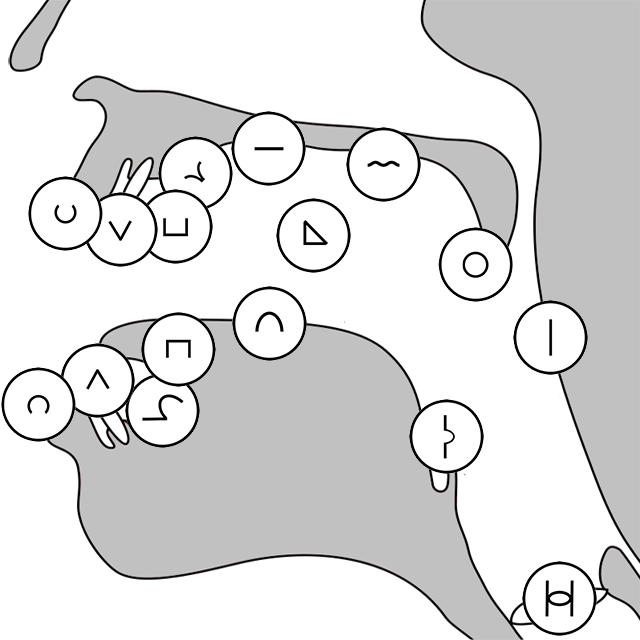
Plosives are sounds created by stopping and suddenly releasing airflow between two (or more) parts of the mouth anatomy. Plosives include the English language letters d, t, b, k, and p.
For example, a Bilabial (two lip) Plosive will stop and release the air between two lips making an English letter b sound. In Beatboxology this is shown using an iconophonic where the two mouth parts are touching.
Here are the icons for the two mouth parts (lips).
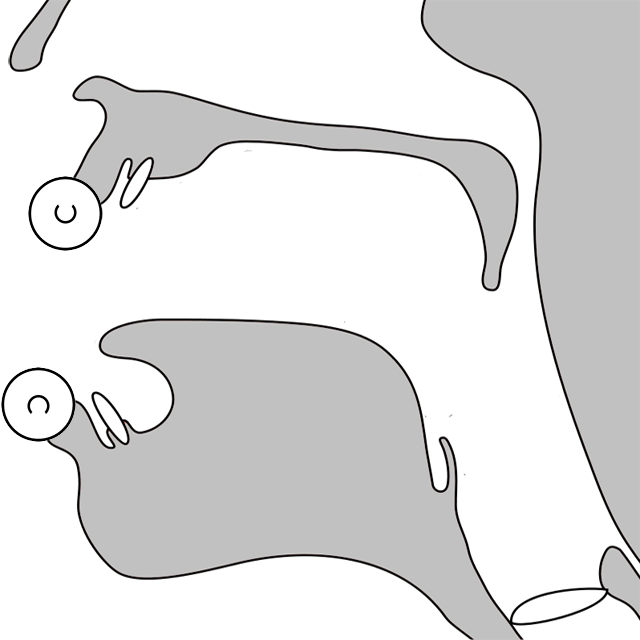
And here is the resulting iconophonic:
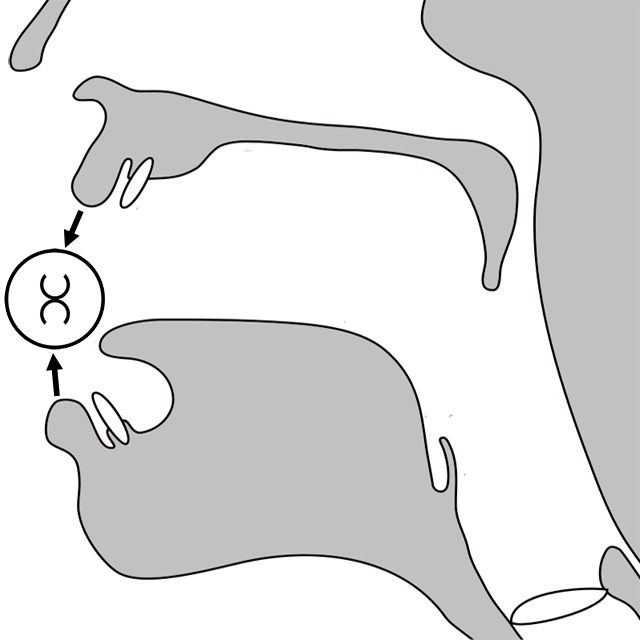
And it sounds like this:

Fricatives are continuous sounds created by squeezing air between two or more mouth parts. In the English language, s, sh, f, and h are all fricatives.
Fricatives are shown as iconophonics with a small gap between the mouth parts. For example, a Bilabial Fricative.
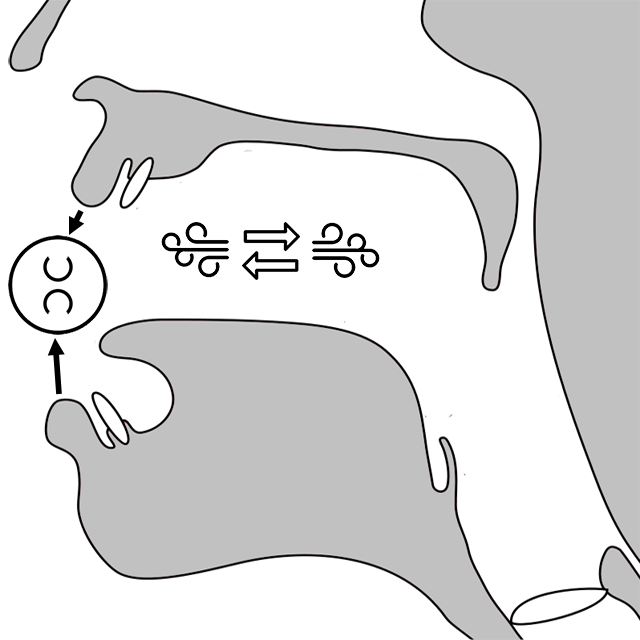
Here is a beatboxer making a Bilabial Fricative:
Percussives are sounds created by banging together two parts of the mouth anatomy. Typically, very few sounds are created this way. In Beatboxology, Percussives are indicated by a small circle overlapping the two mouth parts.
This is a Sublingual (under tongue) Percussive made by the tongue and the floor of the mouth.
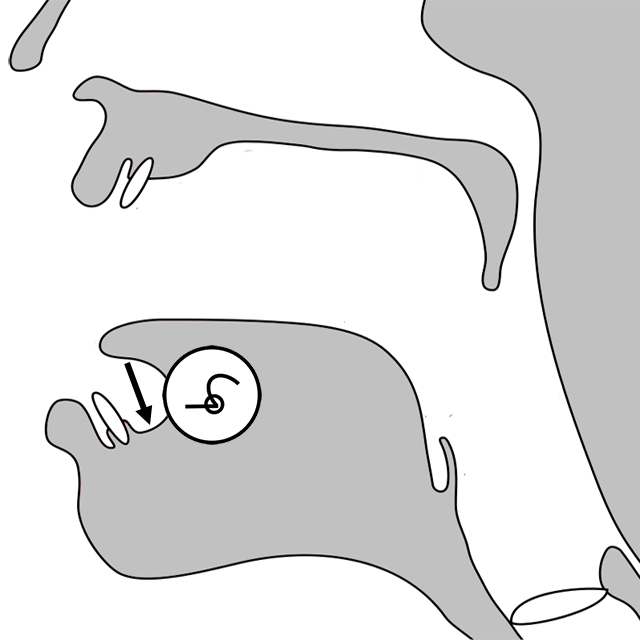
Here is a Beatboxer making a Sublingual Percussive.
Stops are where two (or more) parts of the anatomy stay in contact for the duration of the sound. For example, the lips stay pressed together when articulating the English language letter m. Stops are indicated by having a connecting line between the two mouth parts.
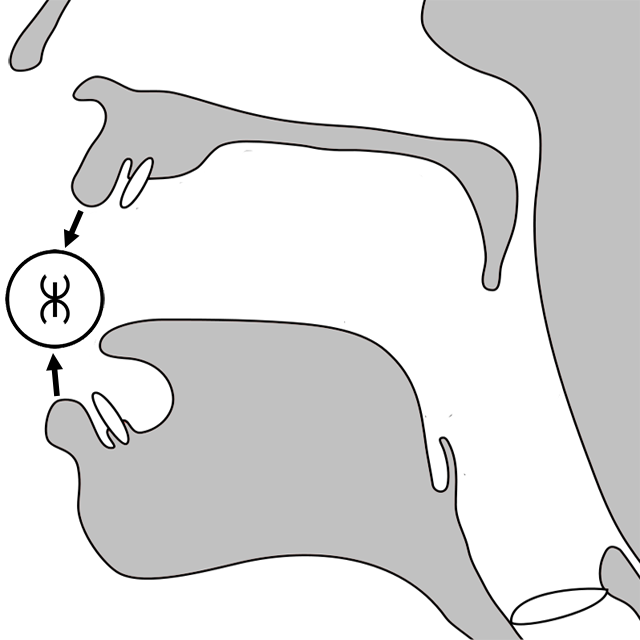
The Vocal iconophonic is used to show if a sound is voiced or vocalised.
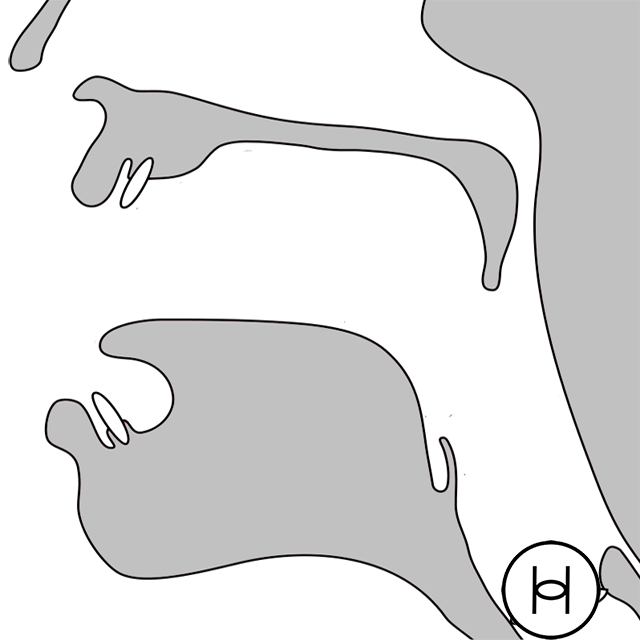
The Vocal Iconophonic can indicate if the voice is pitched medium, high, or low.
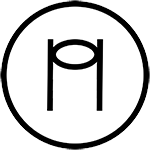

And finally, there are five different effectors that can shape a sound. A sound can be made aspirated (breathing), inwards (injected), forced, oscillated, and/or tightened.

This is the Aspiration Effector that shows that the sound is made whilst breathing.
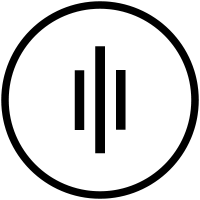
This is the Inward Effector that shows that the sound is made inwards.

This is the Forced Effector. When this is applied to plosives a small vibration or short oscillation is produced that amplifies the sound.

This is the Oscillation Effector. This shows that the plosive is oscillated to produce continuous vibration.

This is the Tight Effector. It is applied to plosives to show that the lip or tongue muscles are tightened.

Iconophonics can be combined to describe more complex sounds. For example, here is an 808 snare drum sound.

It is a tight and forced alveolar plosive! And it sounds like this:

BZZKTT is an education web application that uses Beatboxology to teach beatboxing using a combination of iconophonics and language-free video explanations.
Beatboxology: www.beatboxology.com
BZZKTT: bzzktt.com
TyTe on Facebook: www.facebook.com/beatboxtyte
Beatboxology is a beatbox notation methodology developed by Gavin Tyte (aka TyTe). All Icons developed by TyTe. © 2016-2020 Revd Gavin Tyte (aka TyTe). All Rights Reserved.

Special thanks to Gary Taylor-Raebel, Tyler Thompson, Kevin Le Maux, and Michael Wyatt for their help in reviewing Beatboxology and giving me extra work! I valued your input and help. Thank you! 🙂
BZZKTT Version 8.2 • © 2015-2020 Gavin ‘Beatbox’ Tyte (aka TyTe) • All Rights Reserved
BZZKTT is kindly hosted by Alex Tearse from Reefnet.
Special thanks to Alex Tearse, Paul Arnett, Michael Wyatt, Tyler Thompson, Helen Tyte, David ‘Goznet’ Gosnell, and Jerusalem Productions.